Homemade Easter Colomba, the artisan recipe
There Colomba is the most loved Easter cake and spread throughout Italy and abroad. The origins of the cake are lost in legend: it is said that it was probably born in the Middle Ages, when an old merchant from Pavia gave the King Alboinwhich was besieging the city, a cake in the shape of a dove as a sign of peace. Marketed for the first time in Milan in the 1930s as an Easter product from the Milanese company Motta, the Dove is now the quintessential symbol of this holiday. With this recipe we want to explain how to prepare the Homemade Easter dove with beer yeastexplaining the procedure step by step. We advise you to start preparing it early in the morning, because there will be several steps to perform. It’s very important respect all leavening times: if you do it, you will get a top quality Easter Colomba, completely handcrafted, scented and fragrant! And if you are also looking for other Easter recipes, also look at our recipe for pastiera, casatiello and Neapolitan tortano.
Ingredients for 1 dove of about 1 kg
- Manitoba flour: 465 g
- Water: 155ml
- Fresh brewer’s yeast: 20 g
- Granulated sugar: 230 g
- Butter at room temperature: 220 g
- Egg yolks: 40ml
- Salt: 5g
- Orange paste: 30 g
- Diced candied orange peel: 300 g
- Untreated orange peel: 1
- Vanilla bean: 1
- Acacia or millefiori honey: 30 ml
- Peeled almonds: 50 g
- Roasted hazelnuts: 20 g
- Fine corn flour: 20 g
- Corn starch: 10 g
- Egg whites: 70ml
- Granulated sugar: to taste
- Almonds: to taste for decoration
- Preparation: 24 hours
- Cooking: 50 minutes
- Total: 24 hours, 50 minutes
- Calories: 453 kcal/100g
Preparation of the aroma: about 12 hours before
Wash the untreated orange peel well, dry it with a sheet of absorbent paper and grate it finely, placing it in a small bowl.

Add the honey and the seeds of the vanilla bean, cutting the bean lengthwise and removing the seeds with a small knife.
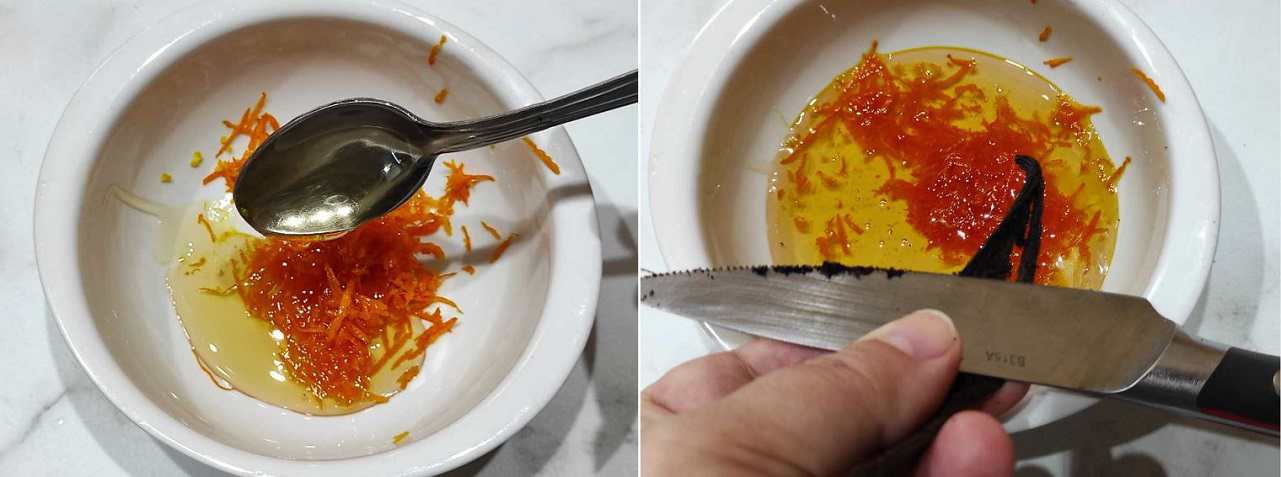
Mix with a teaspoon, cover with a sheet of transparent film and leave at room temperature overnight, until ready to use.
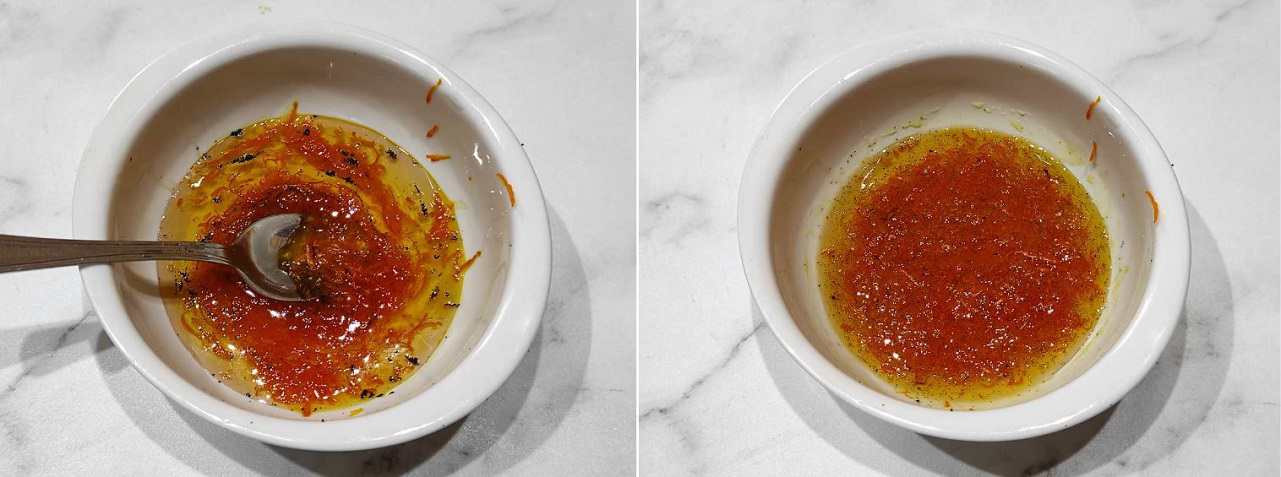
Glaze preparation: 12 hours before
Pour 50 g of peeled almonds, 20 g of toasted hazelnuts, 100 g of granulated sugar into the bowl of a blender. Start the blender at maximum power until you get a flour. If the blender overheats, let it rest for a few seconds before restarting it.

Add the cornmeal and run the blender again for 10 seconds.
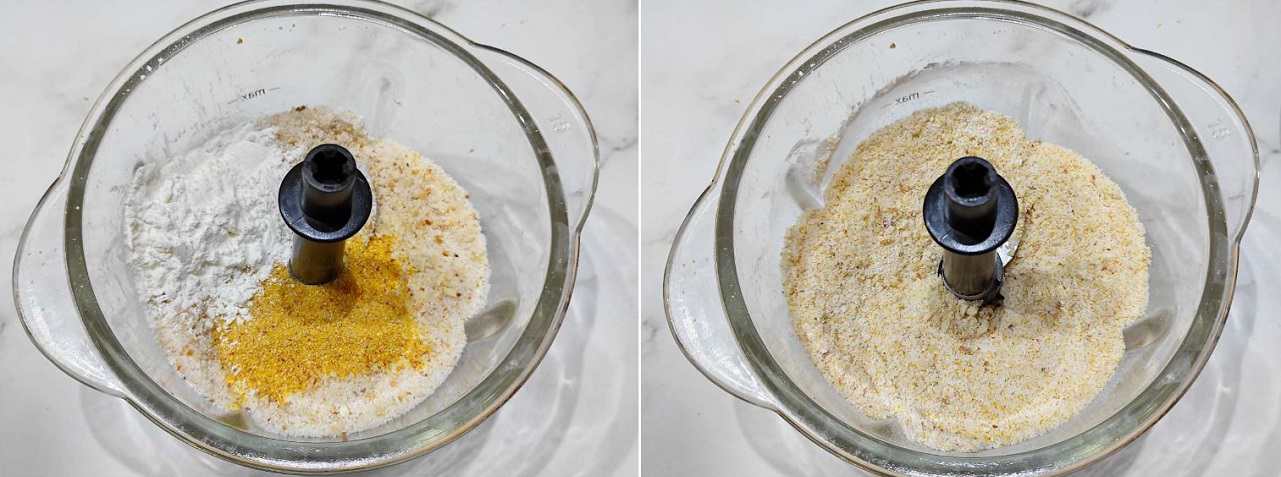
Finally, add the 70 ml of egg white and continue to blend until you obtain a thick and homogeneous mixture. Place in the fridge, covered with transparent film, until ready to use.

Pre-mix and first mix preparation: 8:00 in the morning
Pour 50 g of Manitoba flour, 20 g of crumbled fresh yeast and 15 g of granulated sugar into the bowl of the planetary mixer.
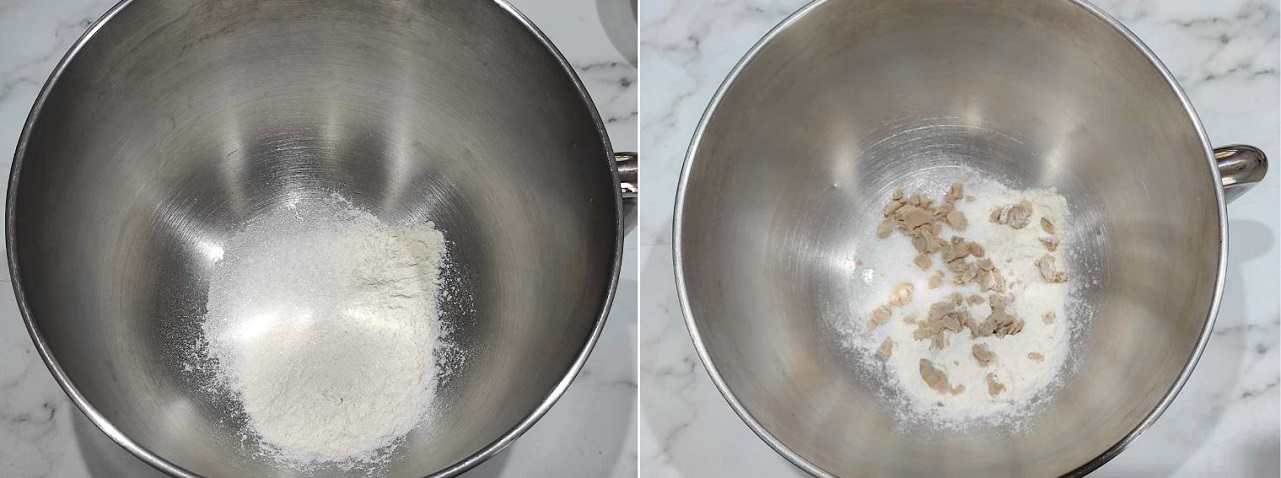
Add 40 ml of water at room temperature and mix with a hand whisk to dissolve the yeast well.

Cover with a damp cloth and let rise in the oven with the light on for about 30 minutes. Ideally, the oven should be at a temperature of around 24°C.
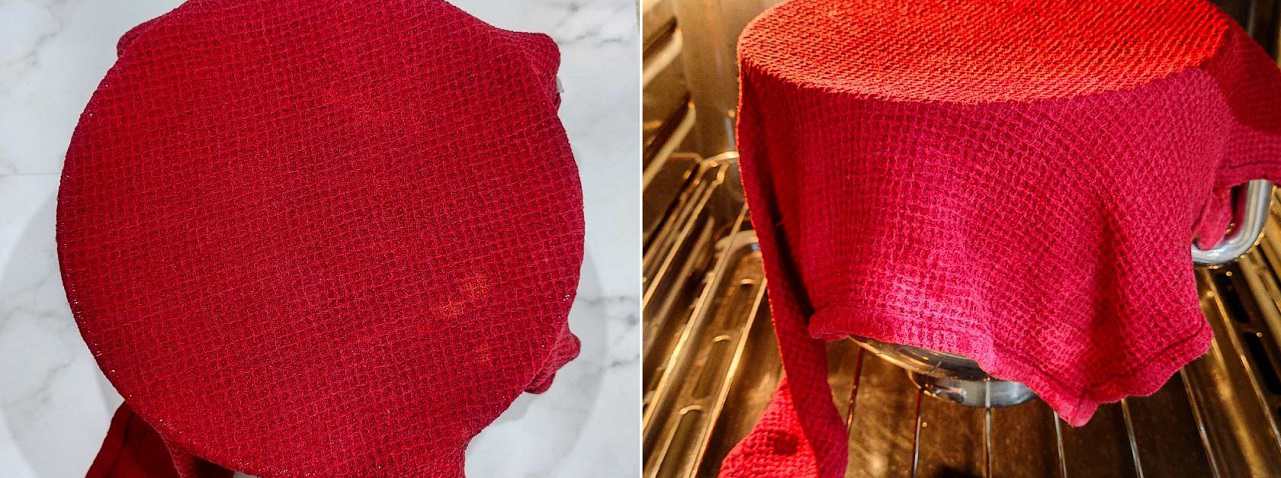
After the 30 minutes of leavening, take the bowl back, place it in the planetary mixer and mount the dough hook. Add another 75 g of Manitoba flour and 25 g of sugar.
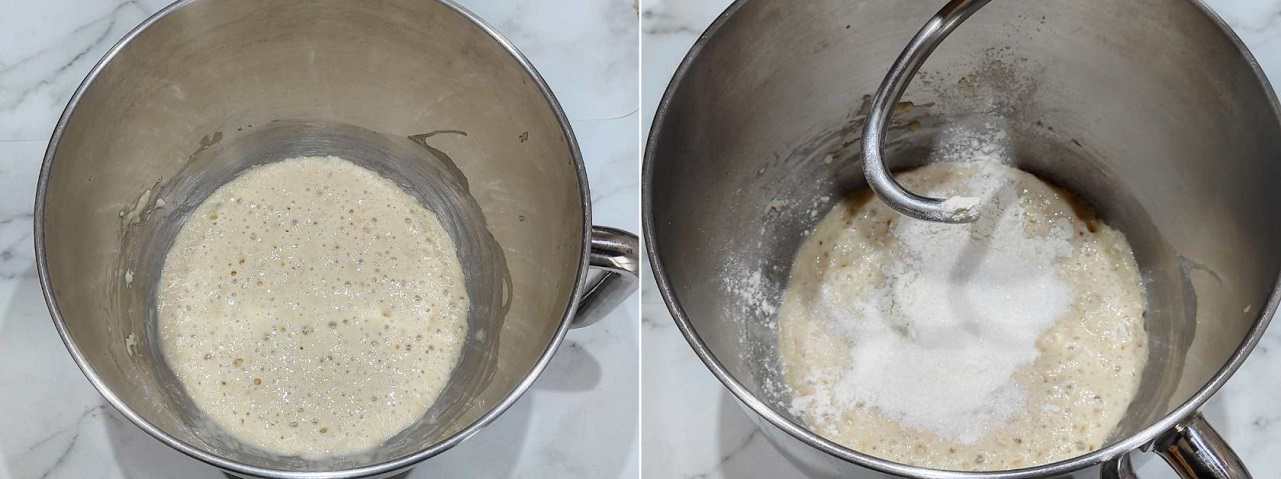
Also add 35 ml of water and 25 g of soft butter cut into pieces. Start the stand mixer or mixer at speed 3. Mix all the ingredients well.

Transfer the dough obtained into a bowl, cover again with a damp cloth and let it rise in the oven off with the light on for 1 hour. The dough must triple its initial volume.

While the dough rises, wash and dry the tools used for the preparation that you will need again for the next steps of the procedure. Keep all ingredients in the refrigerator, except the butter. Also put the bowl and stand mixer hook in the fridge.
Preparation of the second dough
When the dough has tripled its volume, transfer it from the leavening bowl to that of the planetary mixer, which must be very cold. Add another 120 g of Manitoba flour and 40 g of sugar to the dough.
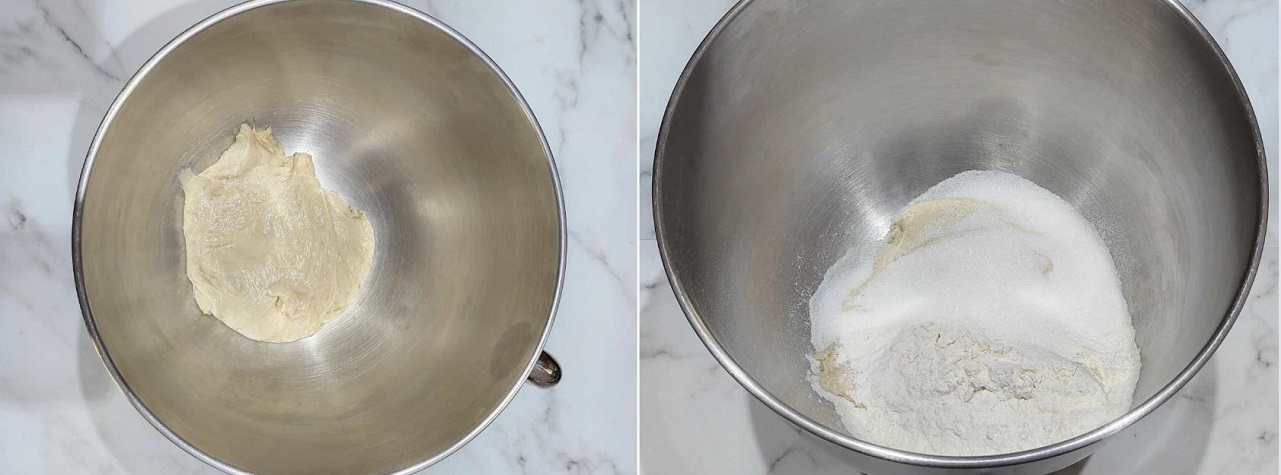
Also pour in 20 ml of egg yolk and 40 ml of water.
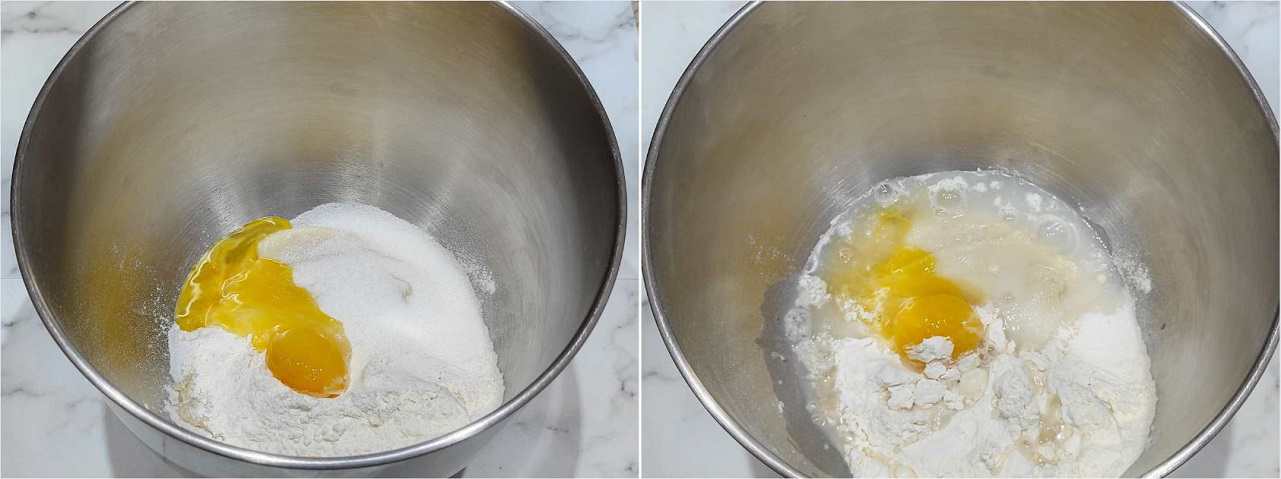
Mount the hook again on the stand mixer or mixer and start the machine at speed 2, in order to mix the new ingredients well with the existing dough.
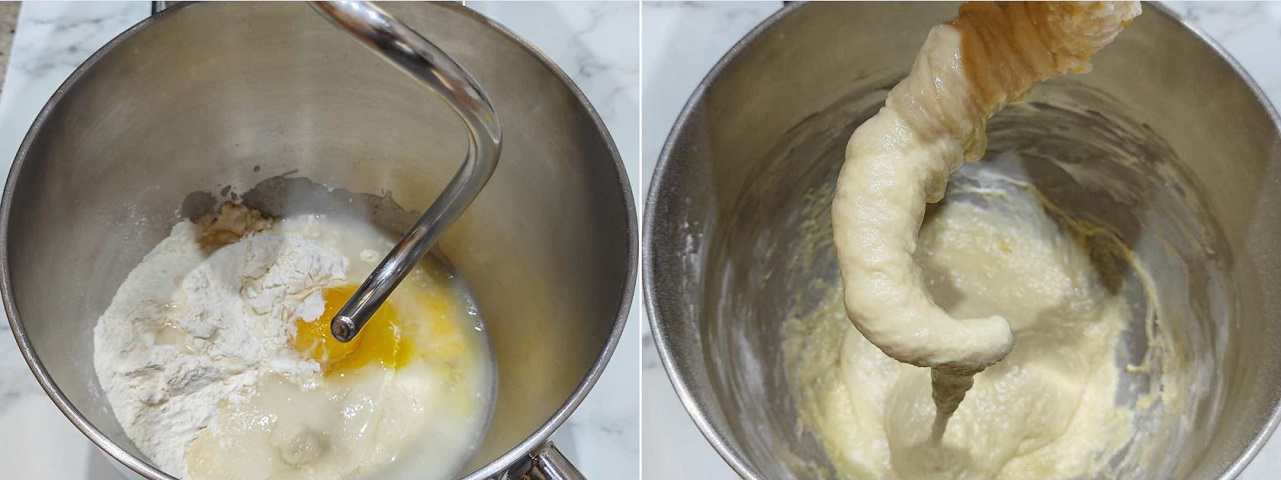
Turn off the mixer and add 25 g of soft butter cut into pieces. Start the mixer again at speed 2 and let it knead the dough for 30 minutes.
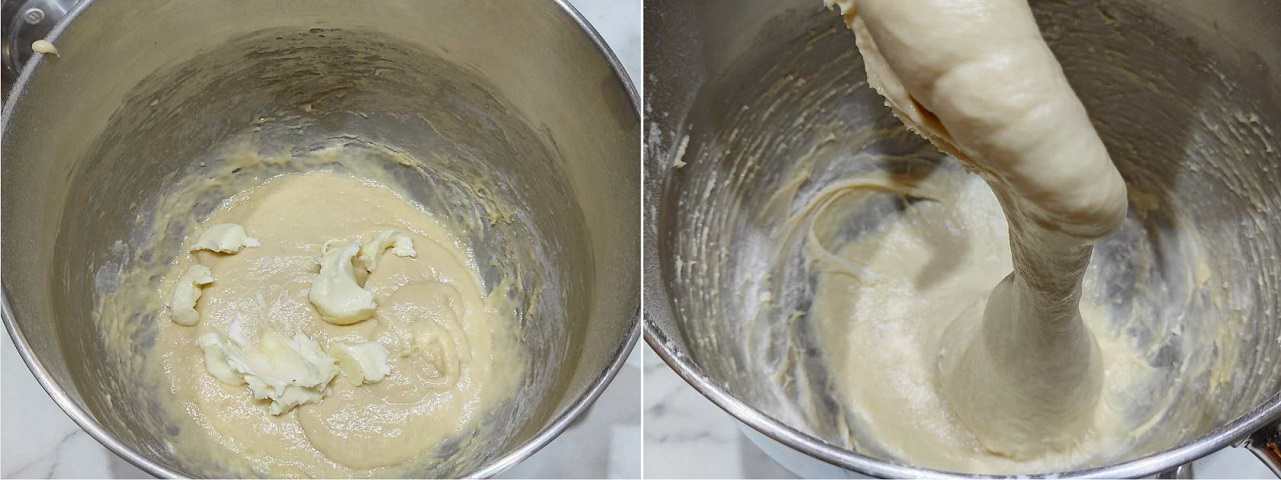
At the end of the 30 minutes of kneading, the dough must be strung: that is, it must detach from the edges of the bowl and from the bottom and must be smooth and elastic, not sticky. Pulling it with your fingertips it won’t have to tear.(

Transfer the dough into the bowl used for leavening and cover it with cling film. Let it rise in the oven off with the light on for 1 hour or in any case until it has tripled its initial volume. As soon as it has tripled, transfer it to the refrigerator and let it rest for 1 hour to lower the temperature of the dough.

Wash the bowl and the stand mixer hook again and place them in the refrigerator together with the other ingredients.
Preparation of the third dough
Start this third phase by preparing the butter cream: pour 120 g of soft butter and 60 g of icing sugar into a bowl. Whip everything with electric whisks until you get a smooth and soft cream. Cover with cling film and set aside at room temperature.

Take the dough out of the refrigerator and transfer it back into the bowl of the planetary mixer, which must also be very cold this time. Add another 220 g of Manitoba flour and turn the machine on to speed 2, to fully incorporate the flour.

When the flour is perfectly blended, add another 50 g of granulated sugar and start the planetary mixer again at speed 2 for about 3 minutes, until the sugar is also perfectly incorporated.
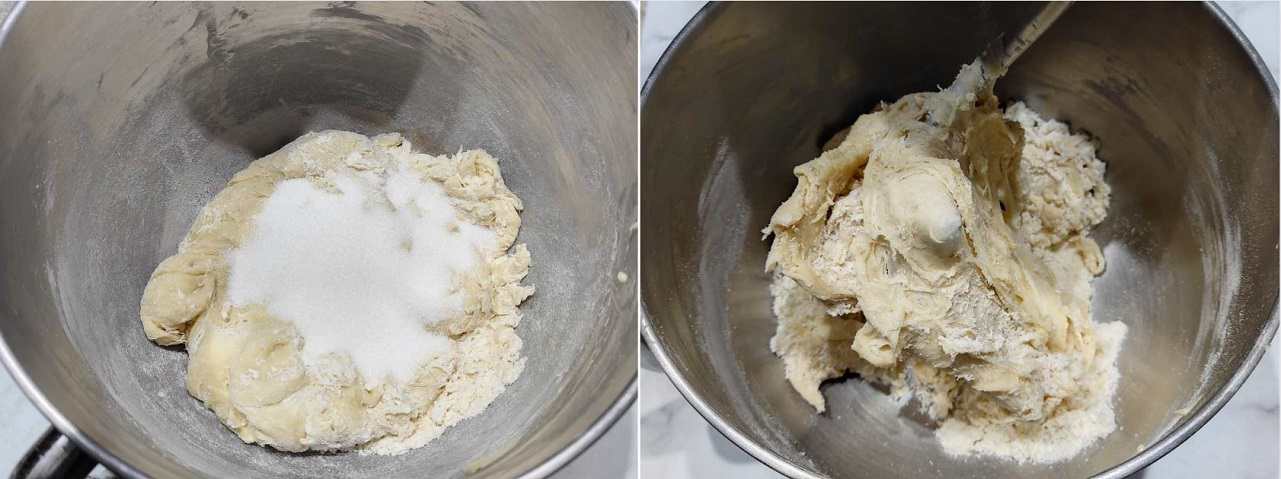
Add 20 ml of egg yolks, little by little, while the mixer continues to mix at speed 2. Each ingredient must be incorporated perfectly before adding the next one.

Now add three ingredients at once: the orange paste, the orange and vanilla flavoring prepared the previous evening and 5 g of fine salt. Let the machine work until they are completely mixed.
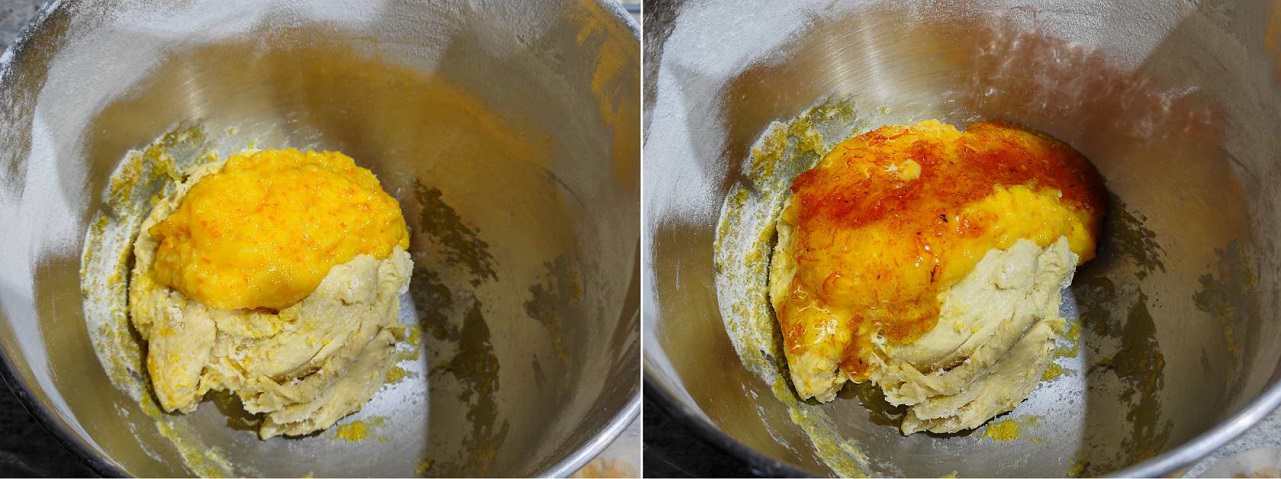
Now pour 40 ml of water and 50 g of butter at room temperature into small pieces. Add the butter a little at a time, to mix all the pieces well.

When you have combined all the pieces of butter, go on to incorporate the previously prepared butter and icing sugar cream. Add 1 tablespoon of creamed butter at a time while the mixer is running, until the cream is finished.

Once all the ingredients of this third phase have been incorporated into the dough, it is necessary to proceed with the processing with the planetary mixer to make it well strung. Always keep the mixer on speed 2 and let it knead the dough for about 30 minutes. Check the temperature of the dough frequently with a cooking thermometer: it should never exceed 25°C-26°C. If the dough gets hot, remove the bowl from the planetary mixer, place it in the refrigerator and let the mixture rest for 30 minutes so that it cools down.

The final dough, perfectly strung, must be smooth and elastic: try to pull it with your fingertips. If it doesn’t break, then it’s ready. If, on the other hand, it should tear, work it again with the planetary mixer.
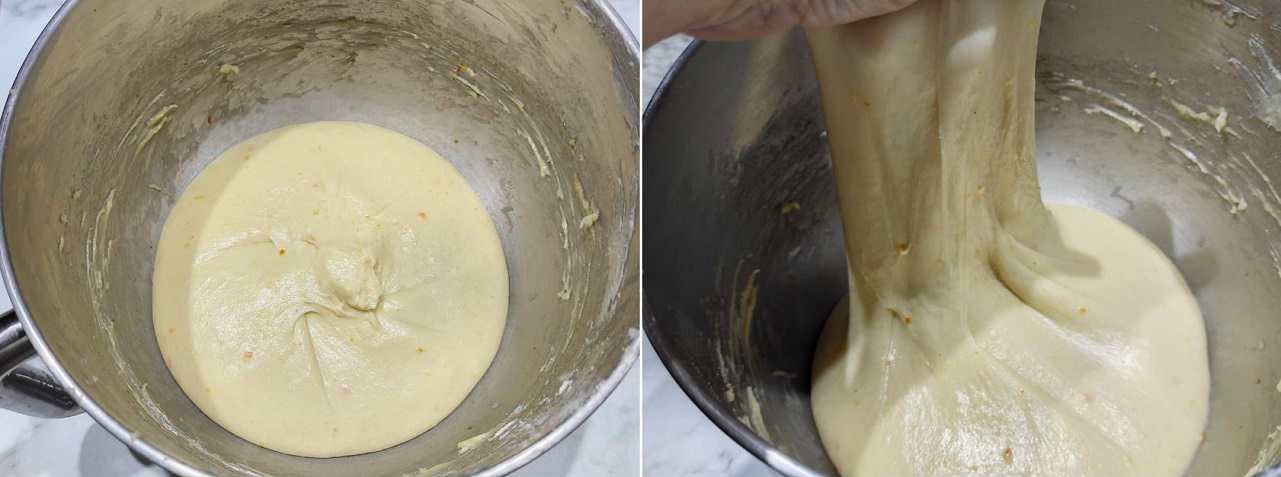
The phase of pirlatura
Once strung, transfer it to a buttered work surface, add the candied orange zest cut into small cubes and work it delicately with your hands to mix the zest into the dough.
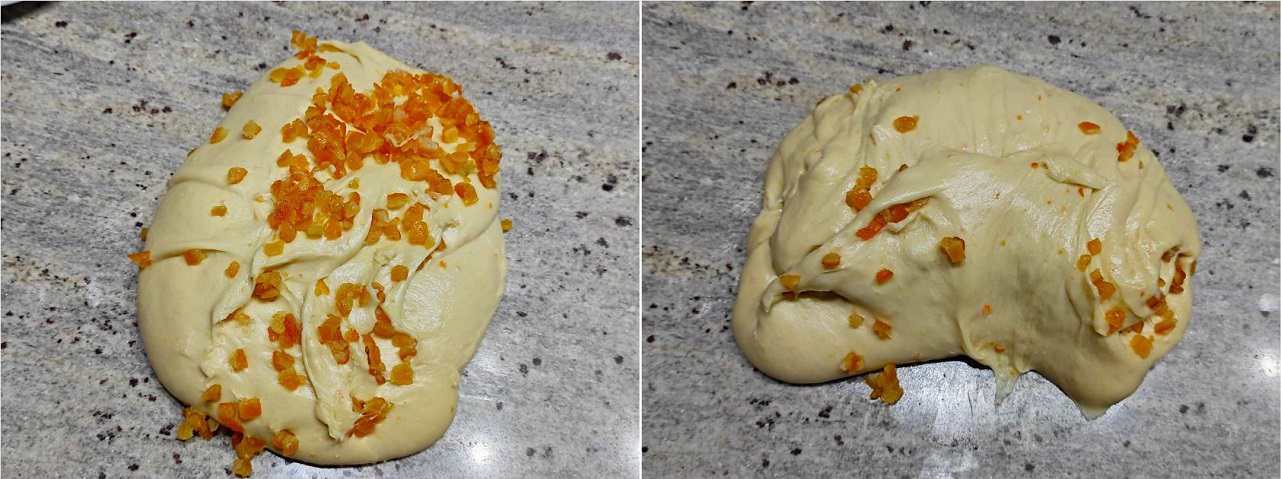
Proceed to the first kneading: roll the dough by turning it in your hands or on a pastry board, thus giving it a spherical and smooth shape. The pirlatura technique is used to give a regular growth to the dough during the leavening phase. After kneading the dough, let it rest uncovered for 30 minutes on the work surface.

After 30 minutes, divide the dough into two parts. One part must weigh 600 g, the other 500 g. Repeat the pirlatura technique again by rolling the dough into two loaves and let it rest on the work surface, uncovered, for another 30 minutes.

After the resting time, take back the two loaves and roll them gently to form two loaves.
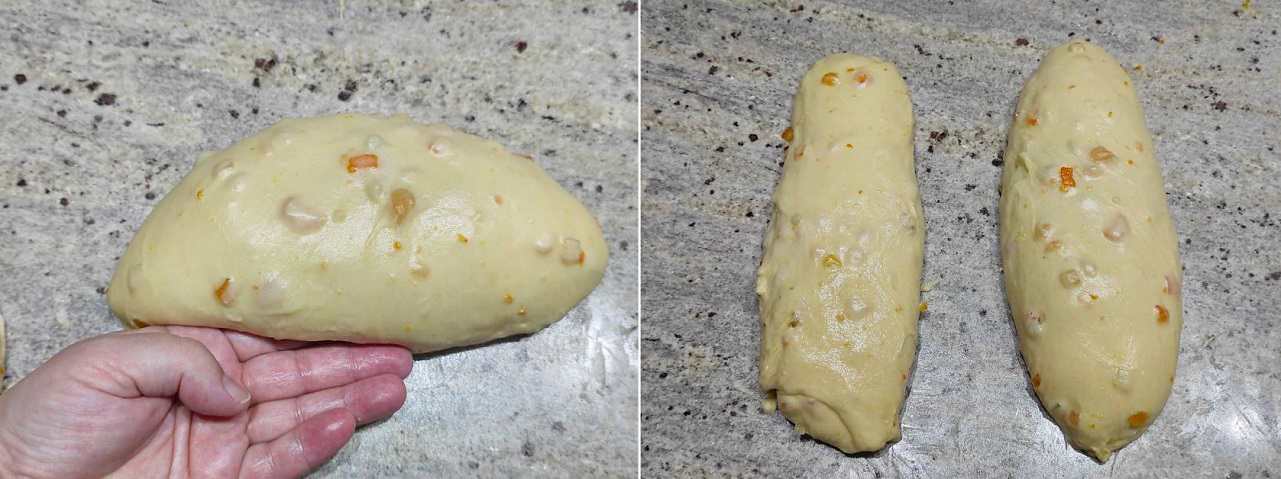
Insert the two loaves into the cardboard mold suitable for the Easter dove, inserting the smaller one horizontally (the wings of the dove) and the larger one vertically (head and tail). Cover with plastic wrap and transfer the mold to a baking sheet. Let the dough rise for 8 hours.

After the 8 hours of rest, check the dough. If the central part of the dough has reached the upper edge of the mould, the Easter Colomba is ready to be baked. If, on the other hand, the leavening was not sufficient, put the dove to rise again in the oven with the light on for 1 hour.
When the dough is ready and has risen enough, fill a pastry syringe fitted with a large-hole nozzle with the icing prepared the night before.

Distribute the icing evenly over the entire surface of the Colomba.
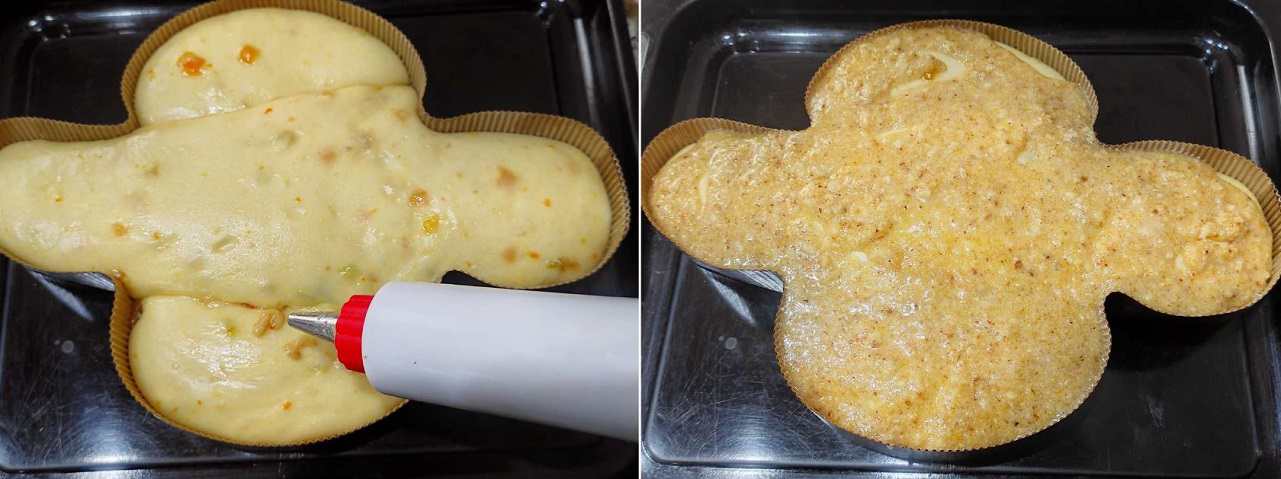
Decorate with almonds and granulated sugar.
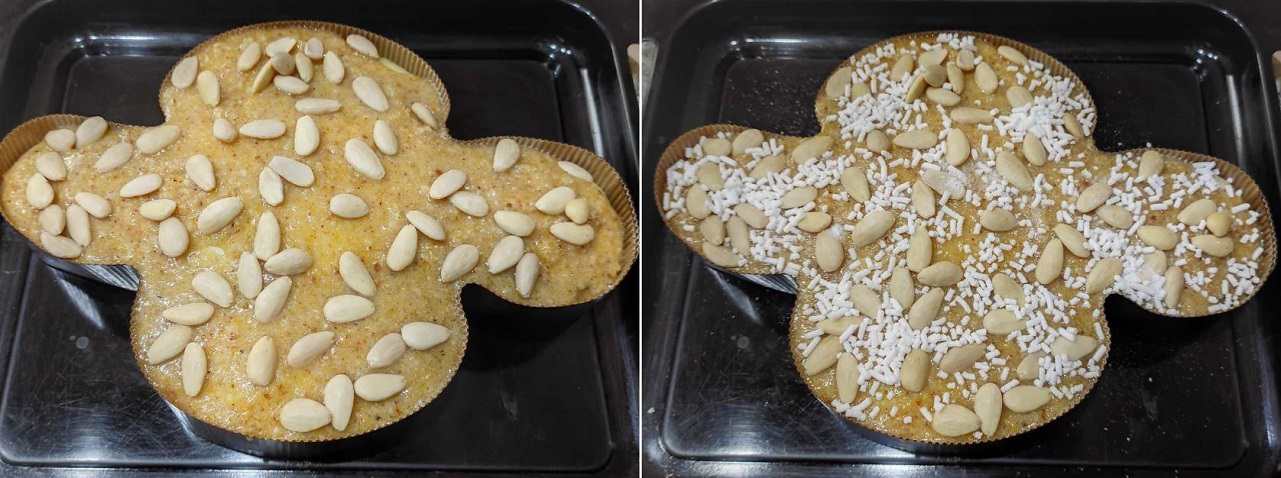
Turn on the oven in static mode setting the temperature at 170°C. As soon as the oven is at temperature, put the dove in the oven and let it cook for 50 minutes. Start checking, after about 30 minutes of cooking, the temperature of the Colomba using the kitchen thermometer. Take the dove out of the oven when it reaches 92-94°C in the heart.

Using two long needles, such as those used for rotisserie chicken or even two knitting needles, thread the Colomba through the side of the wings. Very carefully turn it upside down and place the irons on two cooking pans placed on a work surface. Leave it to cool in this way for at least 8 hours, even overnight, without ever touching it.

After the resting time, your Colomba will be ready to be served or packaged!
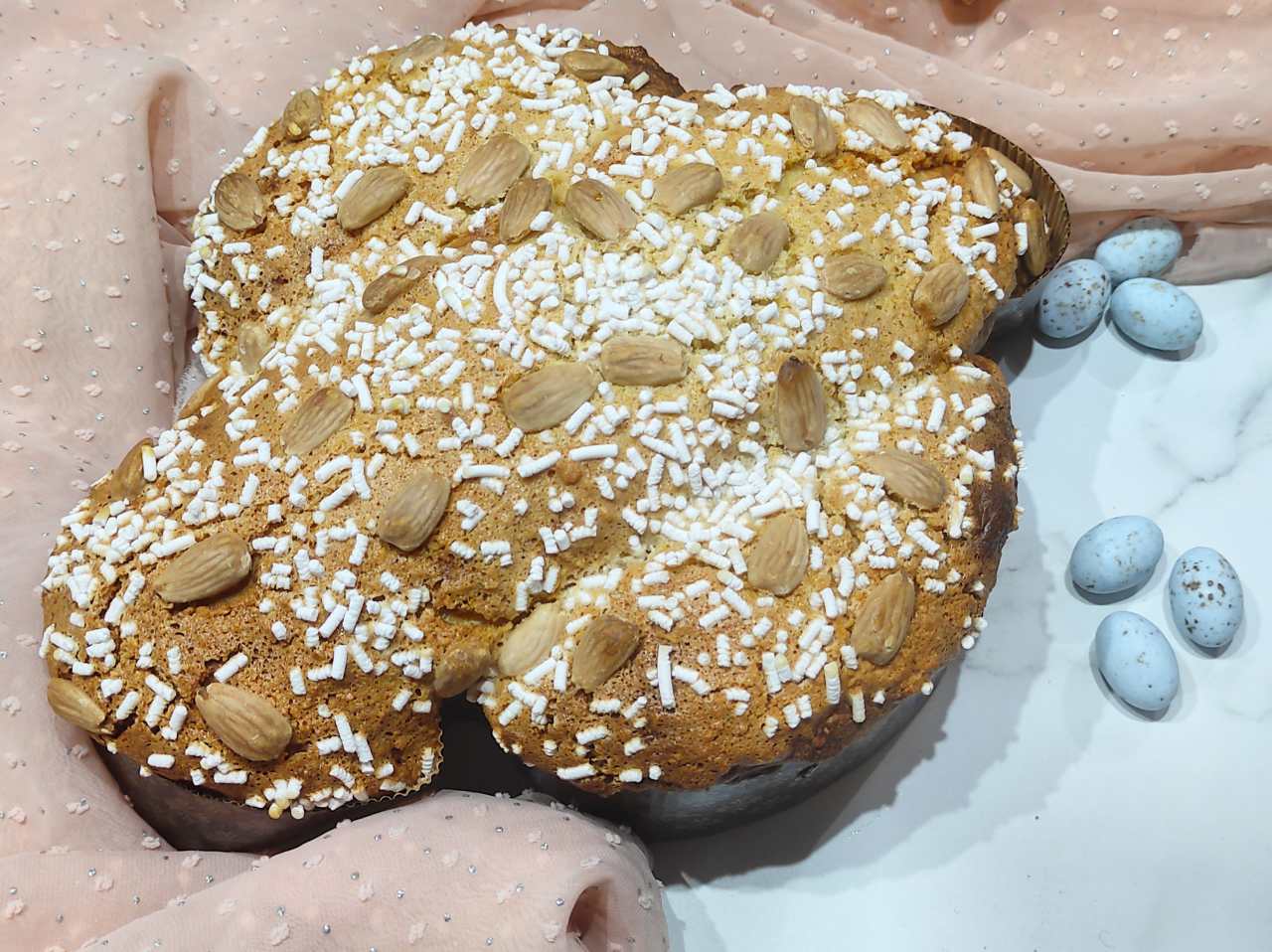
Advice and tips
The Colomba, like any other large leavened product, must be worked with the planetariumotherwise it will be impossible to have an excellent stringing of the dough, which is essential for the formation of the internal alveoli. This applies both to doughs made with brewer’s yeast and mother yeast.
For this recipe you must necessarily use one Manitoba flour, because it is necessary that it has sufficient strength to support long leavening. Therefore, 0 and 00 flours should be excluded. If you can, get yourself a professional-use Manitoba flour that you can find in mills or specialized shops.
Never try to speed up the rising times of the recipe. The Easter Colomba must rise correctly, otherwise you risk compromising the entire preparation.
In addition to the candied orange peel, you can add other candied fruit to your liking, such as citron or pear. You can also add previously soaked raisins for 30 minutes in warm waterthen dried.
For a different Easter Colomba, you can also add some dark or milk chocolate chips or hydrated and dried red fruits.
The orange paste is available online or in specialized pastry shops. Alternatively you can prepare it at home blending orange peela little orange juice and honey until you get a thick and creamy paste.
The special mold for the Easter Colomba can be purchased online. There are different sizes, for this recipe you have to buy the 1 kg mould. In the 1 kg mold can be placed at most 1100 g of doughotherwise the Colomba will risk over-rising and getting ruined during cooking. If you have any leftover dough, you can make a small separate cake, using a loaf pan lined with parchment paper.
storage
Never leave the Colomba Easter more than 8 hours in the air to prevent it from drying out.
The artisan Colomba can be placed in a normal food bag and stored for 2-3 days. It can also be kept for 2-3 days under a glass bell. The important thing is that it always stays in a cool, dry place.
For longer storage, you can buy the special panettone bags for food use, which can be found online. Inside the envelopes you can spray very little food alcohol at 90° to then insert the Easter dove. In this way your homemade Colomba can be kept for up to 1 month.
Alternatively, you can portion your Colomba and put it in the freezer. This way it will last a very long time (up to 3 months). Then let the pieces defrost at room temperature.
Ingredients for 1 dove of about 1 kg
- Manitoba flour: 465 g
- Water: 155ml
- Fresh brewer’s yeast: 20 g
- Granulated sugar: 230 g
- Butter at room temperature: 220 g
- Egg yolks: 40ml
- Salt: 5g
- Orange paste: 30 g
- Diced candied orange peel: 300 g
- Untreated orange peel: 1
- Vanilla bean: 1
- Acacia or millefiori honey: 30 ml
- Peeled almonds: 50 g
- Roasted hazelnuts: 20 g
- Fine corn flour: 20 g
- Corn starch: 10 g
- Egg whites: 70ml
- Granulated sugar: to taste
- Almonds: to taste for decoration
- Preparation: 24 hours
- Cooking: 50 minutes
- Total: 24 hours, 50 minutes
- Calories: 453 kcal/100g

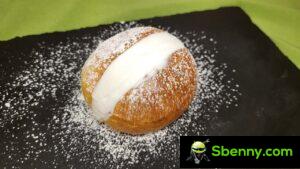
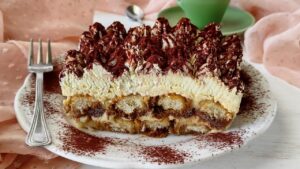
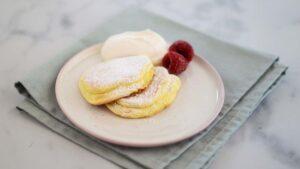
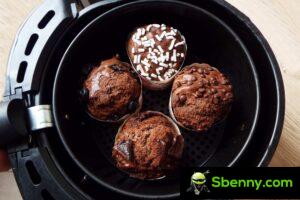
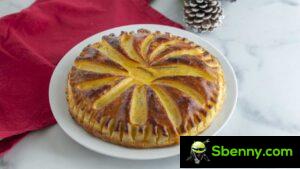

Start a new Thread